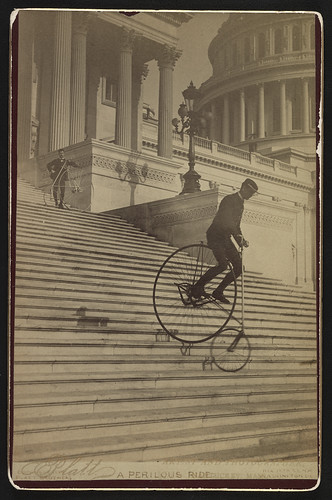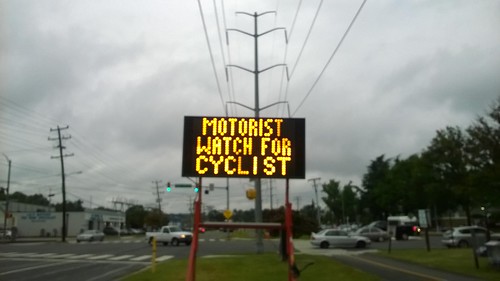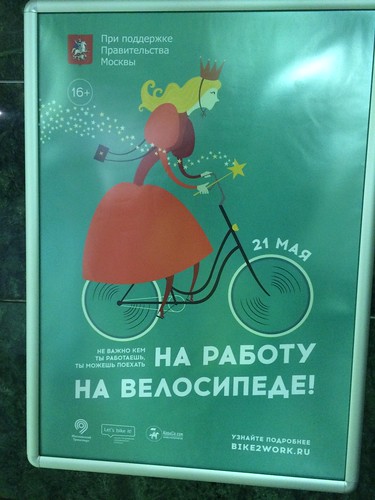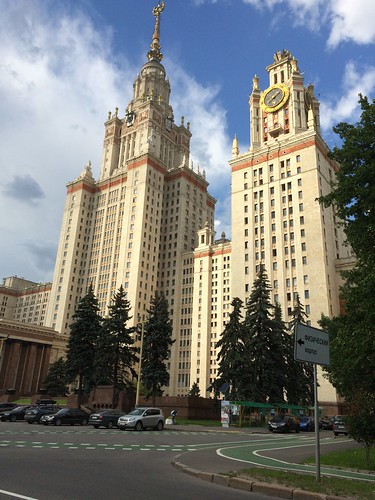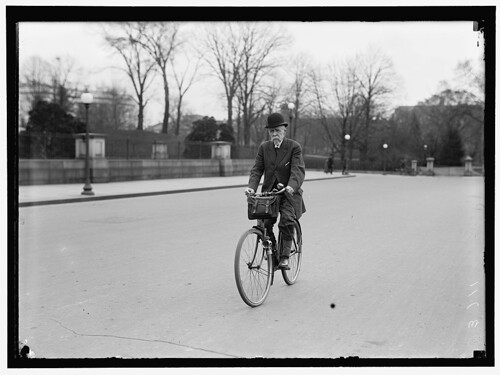
Reasonably rare 1993 Bridgestone XO-1 parked on the street
I work on Capitol Hill. I have an older 1982 Bridgestone road bike, but it is so old that it misses the period when some Bridgestone bikes were sold in the U.S. that then became legendary, such as the XO-1 above.
The XO-1 attracted a lot of attention for its odd "moustache" handlebars (which are not shown too well in my photograph) but it's failure to fit into well understood bicycle categories of the 20-plus years ago seemed to be the biggest problem, and perhaps surprisingly for a bike not made in mass numbers, this was the subject of discussion even decades later - see this 2013 blog post for example. Sheldon Brown's site of information about older bicycles includes the relevant pages from a digitized 1993 Bridgestone catalog that show the bike more clearly and describe its features, as well as its price then (ranging from $1,115 to $1,175) and that only 1,000 were being made. Only 1,000!
My main surprise is that anyone would park a gem like this on the street. Yes, it has a U-lock and also a cable lock, but . . .
